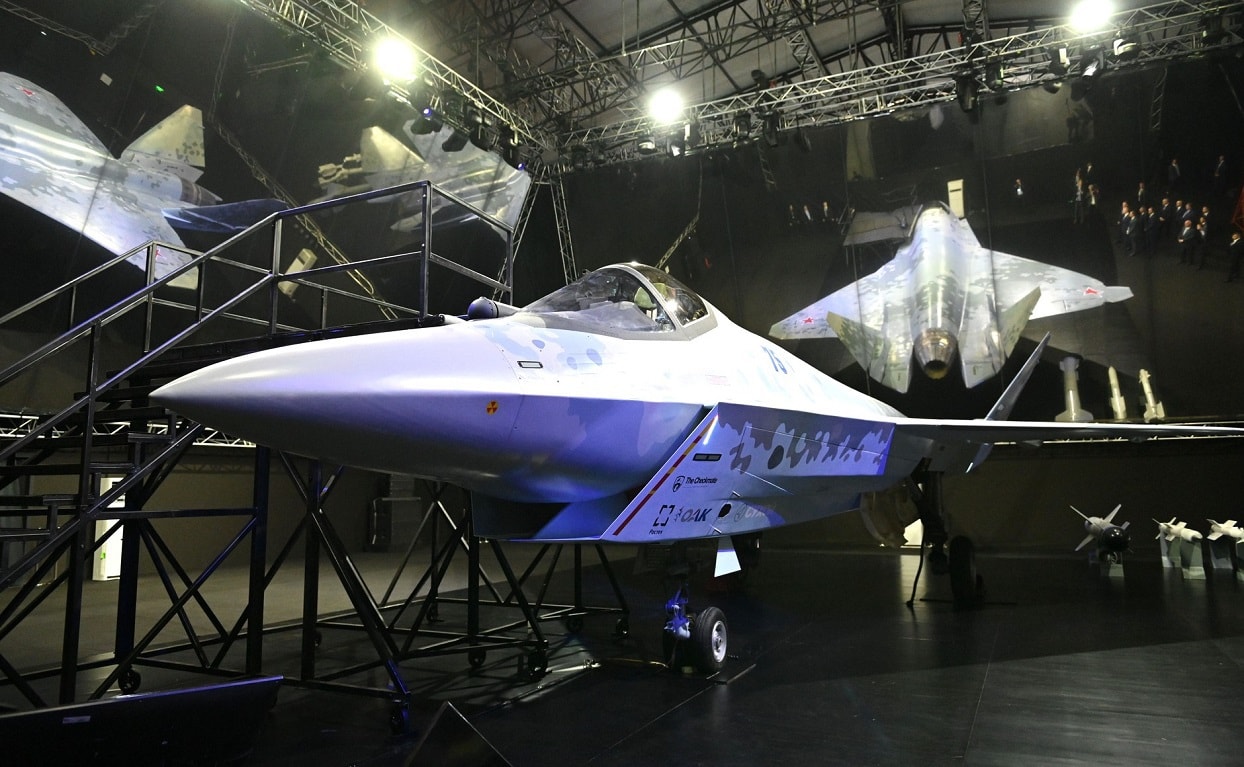The Su-75 seems to have at least some potential. It looks cheaper than the F-35 and even Russia’s own Su-57 stealth fighter. However, a slew of problems could stop this fighter plane from ever truly getting into the sky, as one expert explained: Ever since it was first unveiled at the 2021 MAKS Airshow near Moscow, significant speculation has emerged about the capabilities of the Su-75 stealth fighter, which remains in an early stage of development. While the on-paper characteristics of the Su-75 seem impressive, it is yet to be seen if reality lines up with Russia’s plans. It is clear that Russia hopes to make the Checkmate into a fighter that will compete with state-of-the-art aircraft in service with Western air forces, but clear limits on Russian production capabilities and technological know-how could present insurmountable headwinds to such a goal.
What Does Russia Claim the Su-75 Checkmate is Capable of?
As a starting point, it is important to understand the capabilities the Su-75’s designers in the Sukhoi test bureau claim the aircraft will have. According to Sergei Chemezov, the CEO of Rostec (Russia’s state-owned defense company which controls the United Aircraft Corporation [UAC] and in turn Sukhoi), the Checkmate will have a range of roughly 1,800 miles without external fuel tanks, and a maximum combat load of more than 16,500 pounds. Chemezov has also claimed that the per-hour cost of flying the Su-75 will be seven times cheaper than the U.S. F-35 stealth fighter, which he called its main selling point. Russian media have claimed that it will posses a single rotary nozzle jet engine, which appears to be located at the base of the Checkmate’s V-shaped tail in the few photos available of the mockup of the aircraft unveiled at the 2021 MAKS show.
UAC head Yuri Slyusar has claimed that the Su-75 will see its first flight in 2023, although little information by on progress made on the aircraft has been made available to external observers. The aircraft is reportedly designed to be capable of carrying modern Russian air-to-air, air-to-surface, anti-raditation missiles, as well as guided and unguided bombs, and is supposedly designed primarily for export as well. According to Dmitri Shugaev, the Director of Russia’s Federal Service for Military-Technical Cooperation, Russia’s defense industry envisions the Checkmate being sold to customers in the Middle East, East Asia, and Latin America.
What Will the Su-75 Actually be Capable of?
Based on the lackluster development of Russia’s Su-57 Felon to date, which is similarly pitched as a highly advanced next-generation stealth fighter, it is unclear how a similarly ambitious project designed by the same design bureau, produced by the same aircraft conglomerate, and affected by the same punishing sanctions from the West would fare any differently. For example, claims by UAC and Sukhoi figures that the Su-75 will be powered by a state-of-the-art engine recall similar claims about the Su-57. Instead of receiving advanced new engines, the first flightworthy examples of the Su-57 have been equipped with Saturn AL-41F1 turbofan engines, which were designed in the 1980s. Significant questions about Russia’s ability to procure advanced components of the Su-75 such as AESA radar systems and the composite materials used in its construction also remain unresolved.
Even if Russia had not invaded Ukraine in February 2022 and invited a surge of new Western technological and financial sanctions, the Su-75 would have faced huge obstacles in developing or acquiring the necessary components for some of the most advanced technological elements of the Checkmate which would supposedly make it so cutting-edge. Post-invasion sanctions imposed on the West are designed to impose significant technological roadblocks on the Russian defense industry, which will surely take the wind out of the Checkmate’s development sails, to say the least. While Russian systems and aircraft have long been known as cheaper alternatives to Western analogs, Russian engineers at UAC and Sukhoi have given little indication as to where those cost reductions will come from.
For now, all external observers can do with regard to Russia’s Su-75 is to hurry up and wait to see how its development pans out. A quick reading of the writing on the wall suggests that huge obstacles will stand in the way of the development and production of the Checkmate on the timeline Russian officials desire.
Wesley Culp is a Research Fellow at the Center for the Study of the Presidency and Congress. He regularly writes on Russian and Eurasian leadership and national security topics and has been published in The Hill as well as in the Diplomatic Courier. He can be found on Twitter @WesleyJCulp.

